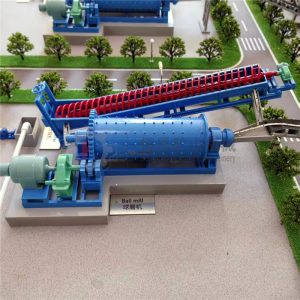Difference Between Grate-Type and Overflow-Type Ball Mill
2025-11-14 11:44:49
Ball mills are currently the most widely used grinding equipment. Grate-type and overflow-type are two common discharge methods, and they differ significantly in structure, working principle, applicable occasions, and performance characteristics.

I. Structural Characteristics
1. Overflow Ball Mill
Discharge Method: The slurry is discharged from the mill by gravity (overflow). When the slurry level rises to the overflow port around the hollow shaft at the mill’s discharge end, the slurry naturally overflows.
Characteristics: There is no dedicated forced discharge device; discharge is controlled by the slurry level.
2. Grate-Type Ball Mill
Discharge Method: The mill’s discharge end is equipped with a grate plate (grid plate) and discharge grids. The slurry is forcibly discharged using the holes in the grate plate and the discharge hammers or blades at the discharge end.
Characteristics: It has a mechanical forced discharge device, resulting in fast discharge speed and less risk of over-grinding.
II. Comparison of Working Principles
1. Overflow Type: During the grinding process, the slurry is continuously impacted and ground by steel balls within the mill. When the slurry reaches a certain concentration and level, it flows out naturally from the overflow port at the mill’s discharge end.
Slow discharge speed, long grinding time, and prone to over-grinding.
2. Grate Type: After being ground within the mill, the slurry and coarse particles are forced out of the mill through holes in the grate plate, aided by blades or rakes behind the grate plate.
Fast discharge speed, relatively short grinding time, reducing over-grinding, and improving processing capacity and beneficiation efficiency.
III. Applicable Scenarios
1. Overflow type ball mills are suitable for: Grinding operations requiring high product fineness; as a second-stage grinding (regrinding or fine grinding) device; situations where the ore is easily ground and requires uniform and fine particle size; generally used in the middle and later stages of the beneficiation process.
2. Grate-type ball mills are suitable for: the first stage of grinding (coarse grinding) where large throughput and fast discharge are required; situations where the ore has high hardness or over-grinding must be avoided; when it is necessary to improve the overall processing capacity of the grinding system; and when used in closed-circuit grinding systems in conjunction with classifying equipment (such as spiral classifiers and hydrocyclones).
Pre: Brief Introduction of Fluorite Ore Beneficiation
Next: None